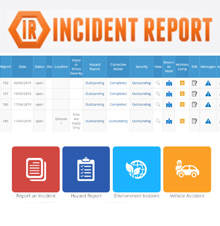Subcontractor Management Checklist: Template and Guide
Online Induction >> Subcontractor Management Software
Published 03/09/2025
 When it comes to managing subcontractors, having a comprehensive checklist template can make a world of difference. A well-designed subcontractor checklist template ensures that all necessary tasks and requirements are clearly outlined and easily accessible. From verifying qualifications and insurance coverage to tracking project progress and deadlines, a thorough subcontractor checklist is an indispensable tool for ensuring smooth operations and minimizing potential issues. In this blog post, we'll explore the key components of an effective subcontractor checklist template and provide insights into how to customize it to your specific needs.
When it comes to managing subcontractors, having a comprehensive checklist template can make a world of difference. A well-designed subcontractor checklist template ensures that all necessary tasks and requirements are clearly outlined and easily accessible. From verifying qualifications and insurance coverage to tracking project progress and deadlines, a thorough subcontractor checklist is an indispensable tool for ensuring smooth operations and minimizing potential issues. In this blog post, we'll explore the key components of an effective subcontractor checklist template and provide insights into how to customize it to your specific needs.
By clearly defining expectations and deliverables, the template serves as a valuable reference point for both subcontractors and project managers, helping to prevent misunderstandings or disputes. Moreover, the checklist can be easily shared electronically, allowing for real-time updates and collaboration across different teams and locations. This level of transparency fosters trust and accountability within the subcontracting process, ultimately contributing to improved project outcomes.
This might be part of your wider contractor management system or feature as part of your processes for a contractor prequalification or contractor induction.
Example Subcontractor Checklist
 By including sections for documenting safety protocols, quality control measures, and regulatory requirements, the checklist helps ensure that all necessary standards are met throughout the duration of the project. Furthermore, it provides a systematic approach for monitoring subcontractor performance and identifying any deviations from agreed-upon terms. With these safeguards in place, businesses can mitigate potential liabilities and maintain operational continuity with greater peace of mind.
Commonly some of these areas might be part of your safety induction.
By including sections for documenting safety protocols, quality control measures, and regulatory requirements, the checklist helps ensure that all necessary standards are met throughout the duration of the project. Furthermore, it provides a systematic approach for monitoring subcontractor performance and identifying any deviations from agreed-upon terms. With these safeguards in place, businesses can mitigate potential liabilities and maintain operational continuity with greater peace of mind.
Commonly some of these areas might be part of your safety induction.
Here are some example fields:
1: Company Information: include the name, address, contact information and registration/licensing details of the subcontractor
2: Scope of Work: outline the specific tasks or services that the subcontractor will be responsible for
3: Contract Terms and Conditions: include a copy or reference to the main contract between the contractor and subcontractor and highlight any specific terms or conditions that may apply
4: Qualifications and Experience: detail the subcontractor's qualifications, certifications and relevant experience that make them suited for the job
5: Insurance Coverage: verify that the subcontractor has appropriate insurance coverage including liability, workers compensation and any other necessary policies
6: Request copies of Safety Policies and Procedures: request copies of the subcontractor's safety policies and procedures to ensure they align with the contractor's standards
7: Performance Standards: the specific performance standards that the subcontractor is expected to meet such as timelines, quality of work, and communication
8: Payment Terms: specify the payment schedule including milestones and delivery requirements and as any penalties for late or unsatisfactory work
9: Compliance with Regulations: confirm that the subcontractor complies with all applicable laws, regulations, and industry standards
10: Acknowledge Safety policies and procedures: to ensure the subcontractor understands what is required of them when working on site
11: Site floor plan, emergency diagrams and other site specific documents: to ensure they are familiar with site specific documents
Why this is important as part of the Induction
When it comes to onboarding subcontractors, having a comprehensive checklist template during induction is essential. This tool helps ensure that all necessary steps are taken to guarantee compliance and safety for everyone involved. By utilizing a subcontractor checklist template, businesses can streamline the induction process and set clear expectations from the start. This not only improves efficiency but also minimizes potential risks and liabilities. With the right template in place, both parties can establish a solid foundation for successful collaboration.The use of a subcontractor checklist template during induction serves as a proactive measure to address potential issues before they arise. It provides a structured framework for introducing new subcontractors to the company's policies, procedures, and safety protocols. By incorporating essential elements such as site-specific requirements, regulatory compliance, and emergency procedures into the checklist, businesses can effectively communicate their expectations while ensuring that subcontractors are well-prepared to carry out their responsibilities.














